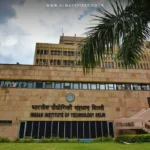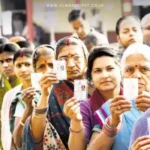
Key Highlights:
- Maharashtra votes on November 20, while Jharkhand sees two-phase polling on November 13 and 20, with results announced on November 23.
- BJP aims to continue its winning streak, while the opposition INDIA bloc looks to regain momentum after mixed results in Haryana.
- In Maharashtra, changing political alliances will test the BJP’s strength, while Jharkhand’s contest focuses on BJP vs. Hemant Soren’s leadership.
What’s at Stake for BJP and INDIA Bloc in These Elections?
As Maharashtra and Jharkhand head to the polls, the stakes couldn’t be higher for both the BJP-led National Democratic Alliance (NDA) and the opposition INDIA bloc. After a series of electoral victories in states like Odisha and Arunachal Pradesh, the BJP is eager to finish the year with more wins. But the opposition is hoping to bounce back, especially after the unexpected results in Haryana.
In Maharashtra, political dynamics have been in constant flux. Once allies, the BJP and Shiv Sena parted ways after the 2019 elections. Uddhav Thackeray, leading a new alliance called Maha Vikas Aghadi (MVA) with Congress and the Nationalist Congress Party (NCP), took charge as chief minister. However, internal conflicts split both the Shiv Sena and the NCP, with Eknath Shinde and Ajit Pawar breaking away to join the BJP-led Mahayuti. This makes the upcoming elections a litmus test for these new alliances and power structures.
In Jharkhand, the BJP faces a confident challenge from Hemant Soren’s Jharkhand Mukti Morcha (JMM) and its allies. Despite legal challenges, including a brief jail term, Soren has retained significant public support and framed himself as a victim of political targeting. With four former chief ministers in its ranks, the BJP is hoping to reclaim power by addressing key issues like tribal rights and national security, but Soren’s popularity presents a strong hurdle.
Can BJP Maintain Its Winning Momentum?
In Maharashtra, the BJP’s strategy centers on leveraging its alliance with Eknath Shinde and Ajit Pawar. They hope to replicate their success from the Lok Sabha elections earlier this year, where the Maha Vikas Aghadi performed well, winning 30 out of 48 seats. However, state elections present different challenges, and divisions within the opposition may weaken the INDIA bloc’s chances. The MVA’s struggle to reach a seat-sharing agreement could play into the BJP’s hands.
Similarly, in Jharkhand, the BJP is determined to reverse its fortunes after losing power in the last assembly elections. The party is focusing on national security issues, particularly illegal immigration, but faces a strong opposition in Hemant Soren’s government, which has positioned itself as a defender of tribal rights. The outcome will not only shape Jharkhand’s future but will also signal whether the INDIA bloc can capitalize on its recent gains in the Lok Sabha elections.
What’s the Bigger Picture?
The results of these assembly elections in Maharashtra and Jharkhand will have major implications for the 2025 general elections. A win for the BJP will solidify its dominance as it gears up for future battles, while a victory for the INDIA bloc could revitalize the opposition ahead of the national elections. Both alliances have much to gain or lose, and the outcome will be a key indicator of the political mood heading into 2025.








































Leave a Reply